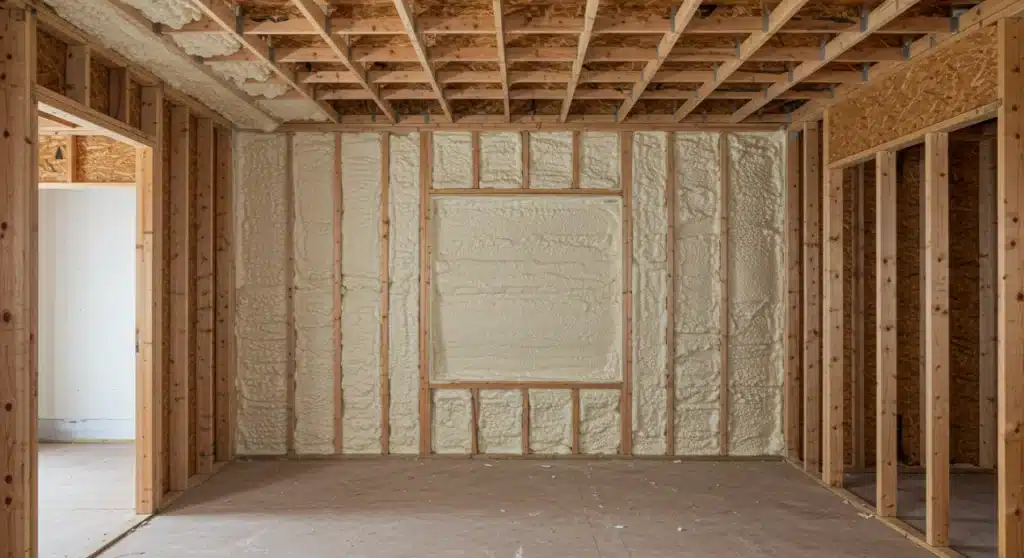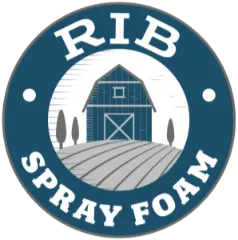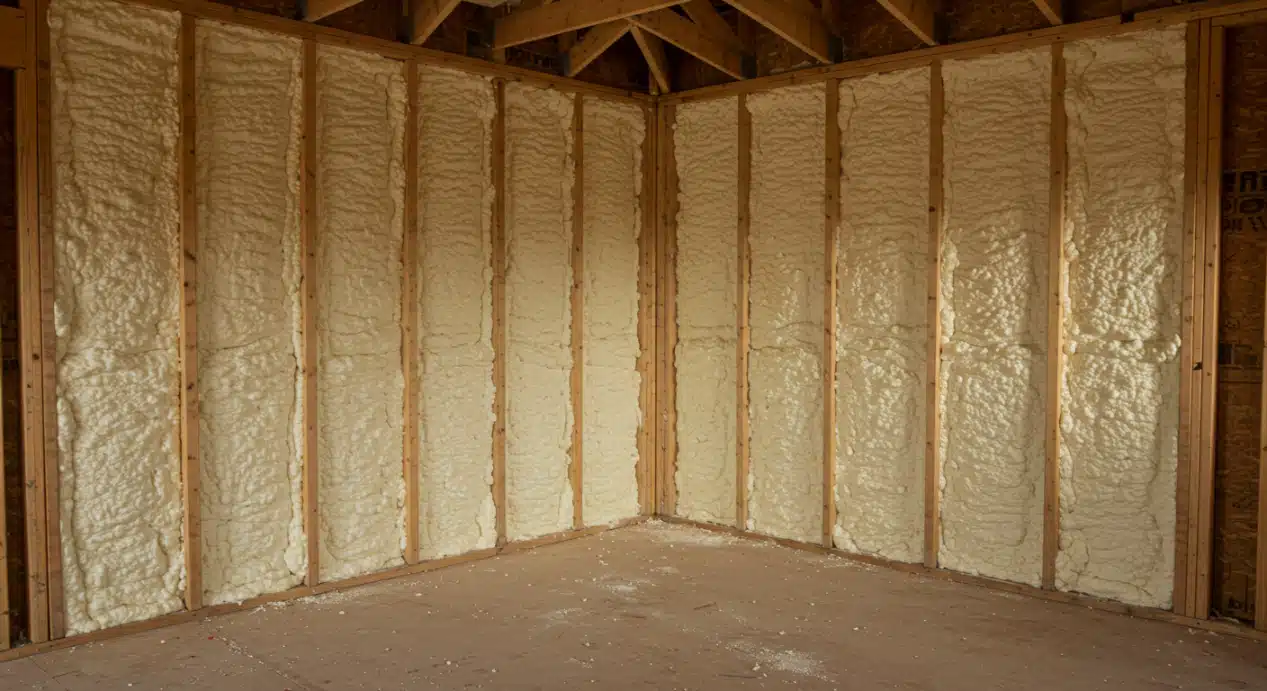Spray foam insulation requires a clean, accessible environment and proper scheduling to ensure performance and durability. Homeowners must complete specific preparations before installation day to avoid delays, achieve full coverage, and prevent post-installation issues.
Begin by clearing access to target areas, verifying moisture conditions, and addressing ventilation or HVAC needs. Incomplete prep can compromise insulation adhesion and long-term efficiency. This guide outlines practical steps based on field experience to help homeowners prepare effectively.
Rib Spray Foam Company provides this information from direct hands-on experience installing spray foam insulation in homes, crawl spaces, pole barns, and new construction across northern Colorado’s varied climate conditions.
Key Steps to Prepare for Installation
Clear Work Areas and Remove Obstructions
Remove any personal belongings, storage items, or debris from the installation area. This includes attic contents, wall obstructions, and items in crawl spaces or barns. Installers need 3-4 feet of clear space around target surfaces to operate equipment safely.
Bonus Tip: Cover valuable or sensitive surfaces nearby with plastic sheeting to avoid exposure to overspray.
Confirm Structural Readiness and Moisture Levels
Inspect surfaces to ensure they are dry, free from oil, rust, and mold. Wet or contaminated surfaces reduce foam adhesion and performance.
| Surface Issue | Impact on Installation | Recommended Action |
|---|---|---|
| Moisture in wood | Prevents proper adhesion | Delay installation; dry area fully |
| Oil/grease residues | Compromises bonding | Clean with appropriate degreaser |
| Rust or corrosion | Weakens long-term adhesion | Treat or sand down before foam application |
Coordinate Electrical and HVAC Access
Ensure that electrical wiring and HVAC ducting are installed or clearly marked. Technicians must know which areas to avoid and where insulation should be applied fully. Avoid last-minute utility work during insulation.
Bonus Tip: Label breaker panels and HVAC zones ahead of time for faster coordination.
Plan Temporary Vacating if Needed
For large-scale applications, expect to leave the property for 12–24 hours depending on product off-gassing and curing times. Ventilation requirements vary by product and building type.
| Application Area | Avg. Curing Time | Re-Entry Timeframe | Protective Measures |
|---|---|---|---|
| Attic (closed cell) | 8–12 hours | 24 hours | Ensure mechanical ventilation |
| Crawl space | 6–8 hours | 12–24 hours | Temporary floor seal recommended |
| Full interior walls | 10–16 hours | 24 hours | Schedule multi-day absence |
Region-Specific Guidance for Northern Colorado Homes
Northern Colorado homes face rapid temperature swings and dry air that can stress insulation materials. Closed cell spray foam remains stable in extreme cold and offers an air barrier suited for high-wind exposure.
Before winter installations, verify the substrate temperature is at least 40°F for closed cell application. Insulation applied in colder conditions may shrink or delaminate over time.
Bonus Tip: Schedule installations mid-day in colder months when surface temperatures are highest.
Things to Consider Before Making a Decision
- Structure age and condition: Older framing may require reinforcement or surface prep.
- Moisture history: Evaluate for previous water issues, especially in crawl spaces or attics.
- Access points: Limited access can restrict equipment movement or delay work.
- Long-term renovation plans: Identify any future demolition or remodel areas to avoid premature insulation.
Technical Specifications for Installation Readiness
| Criteria | Minimum Requirement | Why It Matters |
|---|---|---|
| Surface moisture | Less than 19% | Higher levels prevent bonding |
| Surface temperature | 40°F or above (closed cell) | Cold substrates cause improper expansion |
| Clearance around surfaces | 3 feet minimum | Ensures safe, complete application |
| Ventilation during curing | 3 air changes/hour | Prevents VOC buildup |
| Utility marking and clearance | Clearly labeled and secured | Prevents damage or accidental coverage |

Services Provided by Rib Spray Foam Company
Closed Cell Spray Foam
High-density insulation ideal for Colorado climates. Creates both a vapor and air barrier.
Crawl Space Spray Foam
Controls humidity, blocks pests, and insulates exposed underfloor areas.
Pole Barn Spray Foam
Stabilizes interior temperatures and reduces condensation in metal buildings.
New Construction Spray Foam
Integrates with framing plans to deliver airtight building envelopes.
Get Expert Insulation Guidance
Rib Spray Foam Company provides precision installation across residential and structural builds. For questions about insulation readiness or to book a pre-site evaluation:
Phone: (970) 518-2883 Email: [email protected]
Common Questions Before Installation
Can I stay in the house during the process?
No. Spray foam off-gassing requires temporary vacating for safety. Plan for 12-24 hours away.
What needs to be removed before spraying?
All stored items, fabrics, open containers, and flammable materials should be removed or fully covered.
Is surface cleaning necessary?
Yes. Dust, grease, or rust reduces foam bonding and must be cleared beforehand.
Should HVAC be shut off?
Yes. Turn off forced-air systems to prevent foam particles from circulating.
Can I insulate before electrical is done?
No. Complete all electrical and utility rough-ins first to avoid rework.



